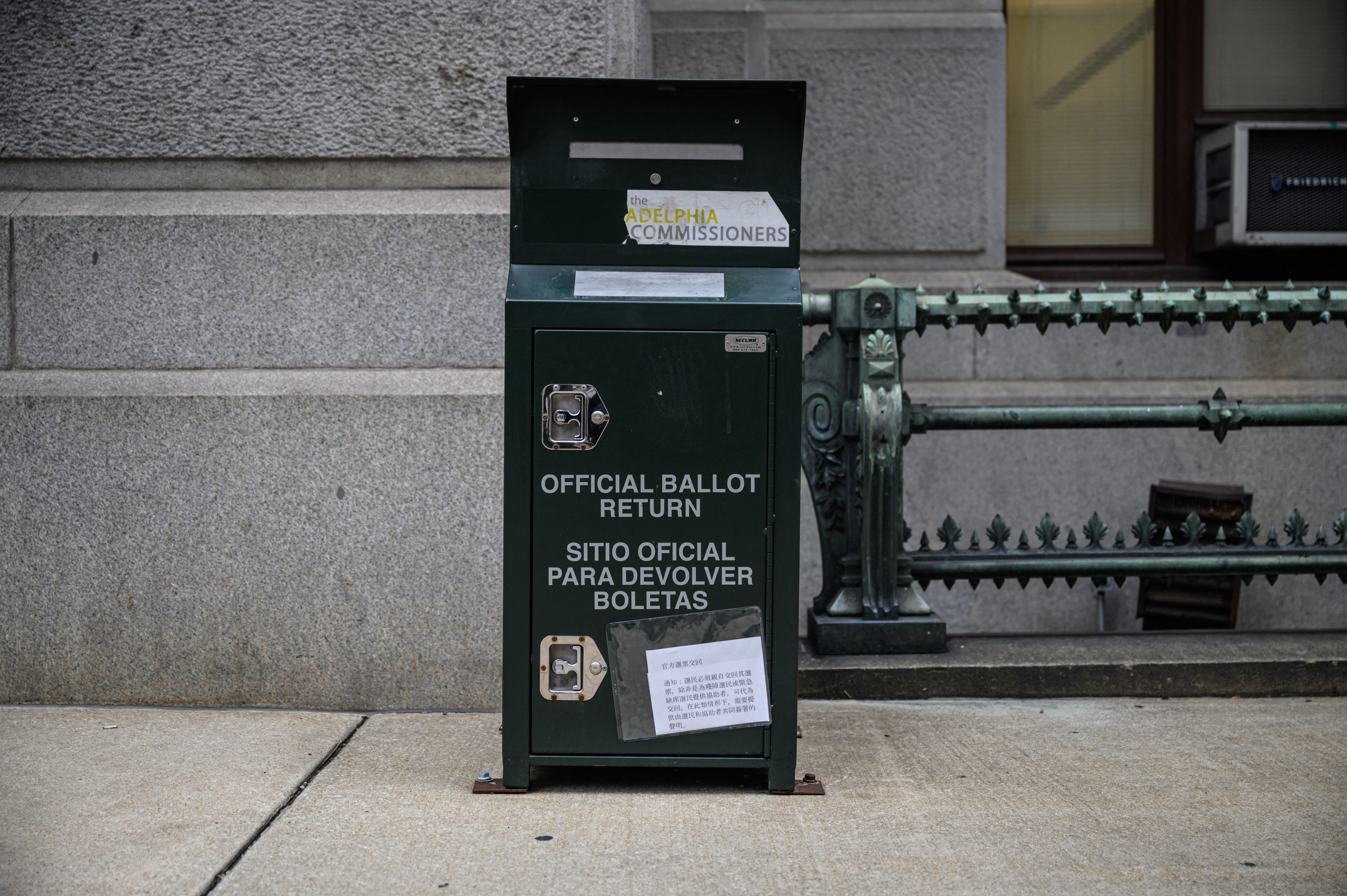In its recent budget draft for the 2013-2014 school year, the School District of Philadelphia proposed to implement a textbook inventory system as a way to help save money and improve education for students.
“The District does not currently have a comprehensive inventory system that can accurately track the use of textbooks in the District,” reads the Budget in Brief document. “SDP plans to invest in an inventory system that will provide recurring savings… In addition to financial benefits of the inventory system, the system will allow for increased textbook monitoring to ensure that students are provided with up-to-date instructional materials.”
This is curious because the District already owns a textbook inventory system. According to a set of instructional videos on the District website, a custom software program called the Textbook Storage System has been available for use at every Philadelphia school since at least May 2009.
Although the software was developed in-house and has been in place for four years, administrators in the District are not using it consistently.
So, despite allocating $111 million to the purchase of books and instructional materials since 2008, the organization is not keeping track of these most basic elements of our children’s education.
Why?
According to District spokesperson Fernando Gallard, who now describes the mention of an inventory system in the budget as an “error,” the existing system isn’t being used because the District doesn’t have enough staff to keep up with it.
Local
Breaking news and the stories that matter to your neighborhood.
“The number one reason why that [textbook] system has not been kept up is the lack of resources,” Gallard said. “Having an inventory system that automates everything and gives us immediate feedback on textbooks would be great. Unfortunately, we have lots of things that are lacking. We are challenged with keeping inventory like computers and furnishings. We would like to improve on this, but we are keeping the focus on the most basic things.”
Instead, Gallard said, each principal is responsible for making sure that students at his or her school have the books they need to learn. Steve Spence, Deputy for the Office of School Support Services, emails the assistant superintendents, who are supposed to email the principals twice a year to find out what materials they need. Spence enters their requests for books (and desks and carpets and other non-instructional materials) into an Excel spreadsheet, which he presents at a meeting of the assistant superintendents.
But it doesn’t appear that everybody got that memo.
Both Donna Runner, assistant superintendent in the Office of Curriculum, Instruction and Assessment, and Melanie S. Harris, the District’s Chief Information Officer, said the district is, and should be, using its textbook inventory system. So did several school principals interviewed.
“Principals are responsible for putting that information in, and ensuring that it was done correctly. That would be an accountability issue for their assistant superintendent,” said Runner.
“As far as I know, everyone should be using the [inventory] system,” said Steve Brandt, principal of Roxborough High School and 2013 recipient of the prestigious Lindback Teaching Award. Roxborough has plenty of textbooks, he said. “I’ve never talked to any of my colleagues about the textbook inventory system, but I just assumed they were using it, since that was the expectation.”
This administrative confusion is potentially expensive as well as academically destructive, because the district has a history of losing track of instructional materials.
In November 2008, responding to criticism that students weren’t permitted to take textbooks home, making homework difficult, then-superintendent Arlene Ackerman called for a textbook audit and promised to implement a textbook inventory system by the spring. This came after The Notebook reported in 2005 that while textbooks were more widely available than in previous years, trouble spots remained.
“Leadership determined that we would be more successful in tracking textbooks if we had a common database that cataloged materials by ISBN (tied to the Library of Congress database), quantity, type of media (textbook, workbook, etc), and subject area,” CIO Harris wrote of the 2008 initiative. “There was also a need to track lost, damaged, or stolen quantities to be reconciled at the end of the year. Schools use the system to check these books into each classroom by quantity at the beginning of the year and then back into a storage location at the end of the year.”
The records in the District’s existing inventory system show a lifetime total of 1,298,402 books. By the District’s own admission, that number is not accurate. But it is sufficiently large as to suggest that keeping track of them is a huge task.
The potential for waste at each of the 242 District schools is vast. The School Reform Commission authorized $18 million to purchase books and instructional materials for the 2012-2013 school year. As of January 2013, the District had spent $8,192,055.73 of that with McGraw-Hill, one of the four dominant educational publishers. Vendor records from the central procurement office show that the materials were ordered for specific schools. Unless inventory records are maintained, those materials can disappear. Like Schroedinger’s cat, we have no way of knowing whether or not any books — purchased with taxpayer dollars — are actually in schools and being used by the students who need them.
And we have real reason to wonder.
According to Runner, for instance, the basement at 440 N. Broad is stocked with books collected from various schools. They’re available if a principal knows they’re there, and to ask for them. But there’s no way for a principal to know what’s in the basement stash, because those books haven’t been inventoried either.
“We don’t have the staff to go through and inventory everything that’s in the basement,” said Runner. “So we have a process in place where when a school requests a book, one of my staff goes down and sees if we have it available. It’s all a manual system.”
Because the inventory system is so poorly implemented, we can’t know for sure whether or not students in Philadelphia’s public schools have all the books they need.
But we do know that parent groups are raising money to buy the books they think their children are missing. On June 1, the Home and School Association at McCall Elementary is planning a fundraiser to raise $60,000 for, among other things, new books for the school. “They don’t have the funds to provide the kids with basic necessities,” said McCall parent Heather Golin. “At the beginning of the year, you get a long supply list, and they’re always asking parents to donate packs of paper. It’s a little difficult to teach kids to read and write without paper.”
As for teachers, whose current union contract stipulates that the District must provide sufficient learning materials, they have no way of knowing what the big picture regarding schoolbooks actually looks like, and whether the terms of their contract are being met. If they don’t have enough books in their particular classroom, they generally fend for themselves.
“We can and have filed grievances regarding the lack of materials and supplies,” said Jerry Jordan, Philadelphia Federation of Teachers president. “Unfortunately, many teachers are accustomed to not having what they need in their schools. Because a grievance has to be made against a principal at a school, teachers are concerned with retaliation. Often when a grievance is filed, there is a resolution before it reaches the grievance table. If it’s a single teacher who makes the complaint, they find books somewhere in the system, deliver them to that teacher, and the issue becomes moot.”
“Materials and supplies play into what you can do in the classroom in terms of creating engaging activities, or exposing students to different perspectives and ideas,” said Roxborough principal Brandt. “You wouldn’t ask a contractor to go onto a job without a hammer or nails. You need those resources to provide kids with the tools they’re going to need to get a good sound education.”
Textbooks are the kind of thing that a large public bureaucracy like the District should be good at tracking. The District created a standardized academic curriculum and has a policy to support it; the schools choose from an approved list of materials, the orders are placed through the Procurement Office, and the rules for buying materials are very clear. Materials from the major publishers are supposed to be matched to Common Core educational standards suggested by the state of Pennsylvania, and those standards are supposed to be aligned with the material on the high-stakes standardized tests that followed the federal No Child Left Behind legislation passed in 2001.
The theory is solid, but the system seems to be too complex, too underfunded, or too understaffed to succeed.
Michael Masch, the vice president of finance and chief financial officer at Manhattan College and the former chief financial officer of the School District of Philadelphia, said funding cuts have meant fewer administrative staff to take care of “details.” These details matter more than anyone imagines. “One of the things the District found when I was there: principals weren’t good at managing cash accounts or student accounts. They needed support in performing administrative functions because they were understaffed,” said Masch. “If the principal doesn’t meet with every parent, deal with every crisis, they get criticized. If they don’t do the invisible stuff, like the paperwork, they’re not going to read about it in the newspaper. So they triage.”
Instead, we have highly paid administrators who can’t, or won’t, use existing technology that could help them more efficiently manage their resources. But since it requires a person to take on the task of doing book inventory at the schools, and there are fewer school workers overall, the task doesn’t get done. And then the bureaucracy loses track of its books.
We need technology to keep track of textbooks. But we don’t necessarily need new technology—we just need to do a better job of using what we already have.
Are you interested in learning more? AxisPhilly will be writing additional stories on exactly what is going on with the textbooks and learning materials that are supposed to prepare our students for the future. Check back with us soon and get in touch with us if you have had an experience with books—good or bad—in the Philadelphia public schools.
This story was reported through a news coverage partnership between NBC10.com and AxisPhilly.org



